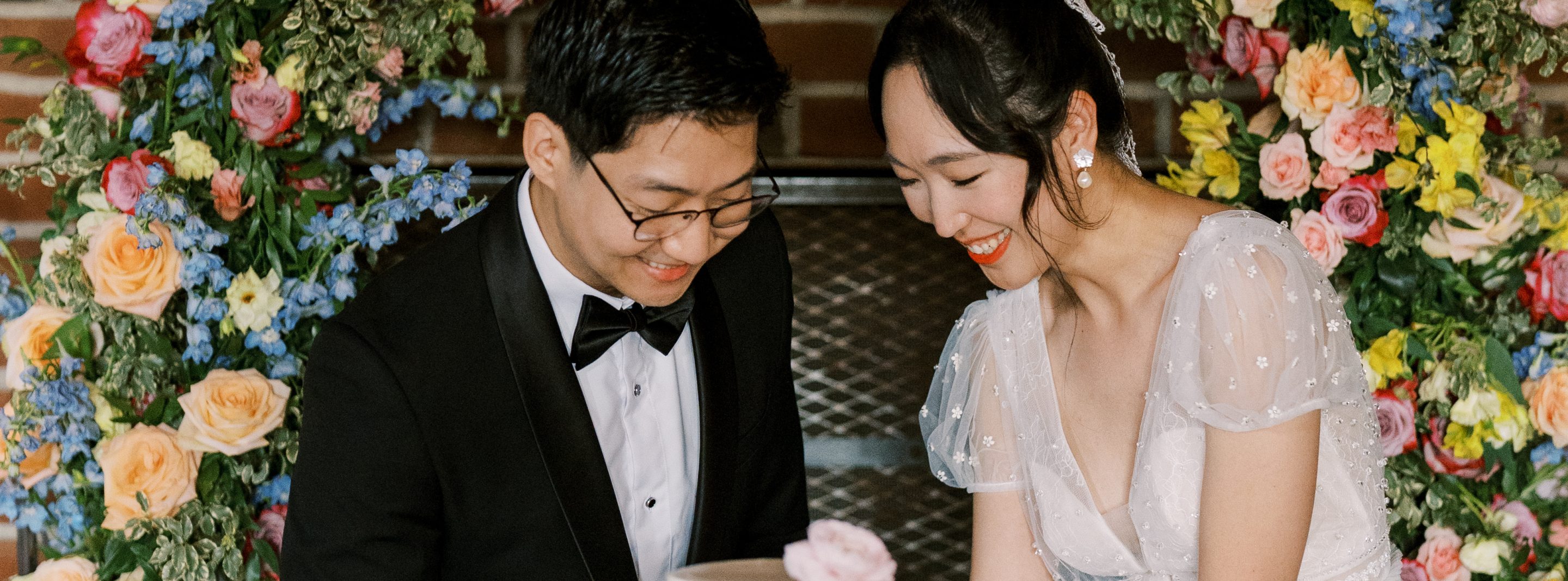7 Popular Wedding Traditions and Their Origins
We all know the phrase, “something old, something new, something borrowed, something blue”, but have you ever thought about where that comes from?
From the white wedding dress to the bridal bouquet to tossing the garter, there are several wedding traditions that we often don’t give a second thought to. These customs often seem like they’ve always been part of the ceremony, but each has a unique history, shaped by culture, religion, and folklore. Let’s explore some of the most beloved wedding traditions and the intriguing stories behind them.
1. The White Wedding Dress
The white wedding dress is now a symbol of purity and innocence, but it wasn’t always the go-to color. In fact, brides historically wore gowns in various shades, depending on the culture and time period.
The trend for white dresses was popularized by Queen Victoria when she married Prince Albert in 1840. Queen Victoria’s white gown became iconic and sparked a lasting fashion trend. Before then, brides typically wore their best dress, regardless of the color. White was a popular choice because the color was linked to wealth. Not very many people could afford to keep a white dress clean!
Modern wedding alternative: White and ivory are still the most popular choices for wedding dresses, but if you choose to wear a dress, don’t feel limited to those colors! Wear whatever makes you feel most like yourself.
2. The Wedding Ring
The exchange of rings is one of the oldest wedding traditions, dating back to ancient Egypt. Egyptians believed the circle represented eternity, making the ring a fitting symbol of everlasting love. They referred to them as “rings of love”.
The tradition of wearing the ring on the left ring finger comes from a Roman belief that a vein in that finger, the “vena amoris,” was directly connected to the heart. Though modern anatomy has debunked this, it’s still romantic nonetheless.
Modern wedding alternative: There are several alternatives to wedding rings if you don’t like to wear rings or are allergic to metals. You might consider tattoos, necklaces, watches, or framing your marriage certificate and hanging it up in your home.
3. The Bouquet
The custom of carrying a bouquet dates back to ancient times when brides held bundles of herbs and flowers to ward off evil spirits (yeah, not all traditions are warm and fuzzy). Ancient Greeks, Egyptians, and Romans believed strong-smelling herbs, such as garlic, protected the bride. The flowers symbolized a new beginning, bringing hopes of love, happiness, and fertility.
Over time, flowers became more popular for their beauty and symbolism.
Modern wedding alternative: Extravagant flower arrangements are stunning, but they may not be in your budget or style preferences. Instead, you can opt for silk or faux flowers or nothing at all!
4. Something Old, Something New, Something Borrowed, Something Blue
The iconic saying originates from an Old English rhyme. Each item is meant to bring luck to the bride.
Something old symbolizes continuity and the bride’s ties to her family.
Something new represents hope and optimism for the future.
Something borrowed is often an item from a happily married friend or family member, believed to pass on marital success.
Something blue symbolizes fidelity and purity, a tradition that dates back to ancient Rome.
Modern wedding alternative: If you don’t want to carry all these items, you can ‘assign’ them to your wedding party or friends. Have someone be your “something blue” by wearing blue attire and so on!
5. The Wedding Cake
Wedding cakes have had quite a transformation over the years! In Ancient Rome, a loaf of bread was broken over the bride’s head to symbolize good fortune. During the Middle Ages, cakes were stacked high, and the couple would try to kiss over the pile without toppling it. At one point, the English thought throwing the cake at the bride would increase their chance of bearing children…
Today, multi-tiered cakes are the most popular. The practice of saving the top tier of the cake for the couple’s first anniversary stems from the 19th-century custom of using the top tier for the christening of their first child.
Modern wedding alternative: At this point, all desserts are fair game! Don’t like cake? No problem! Try donuts, cookies, cupcakes, or an ice cream bar.
6. Throwing Rice
Throwing rice at the newlyweds is an ancient custom symbolizing fertility and prosperity. Are you sensing a theme yet?
This practice can be traced back to ancient Rome, where guests would shower the couple with wheat to ensure a fruitful marriage. Rice became a substitute in later centuries.
Modern wedding alternative: Couples often replace rice with bubbles, flower petals, or even sparklers for a modern twist on the tradition.
7. The Wedding Veil
The veil has roots in multiple cultures and meanings. In ancient Greece and Rome, it was believed to protect the bride from evil spirits. Brides even wore red veils to protect themselves from demons!
In medieval Europe, veils signified modesty and obedience. When arranged marriages were popular, the bride’s face would be covered with a veil until the groom had committed to the marriage. That way, he couldn’t back out!
Today, veils are more of a fashion statement, with various styles chosen to complement the bride’s dress, but they still carry a hint of mystery and tradition.
Modern wedding alternative: The 10-foot long cathedral veil isn’t for everyone, so choose one that fits your style. Or don’t wear a veil at all!
Your Wedding, Your Way
There are hundreds of years of wedding traditions, but only one wedding matters: yours. Whether you want to keep to tradition or show off your own style, we’re here to make your dream wedding come to life. Get in touch with our team to take a tour of our gorgeous Ann Arbor wedding venue!
